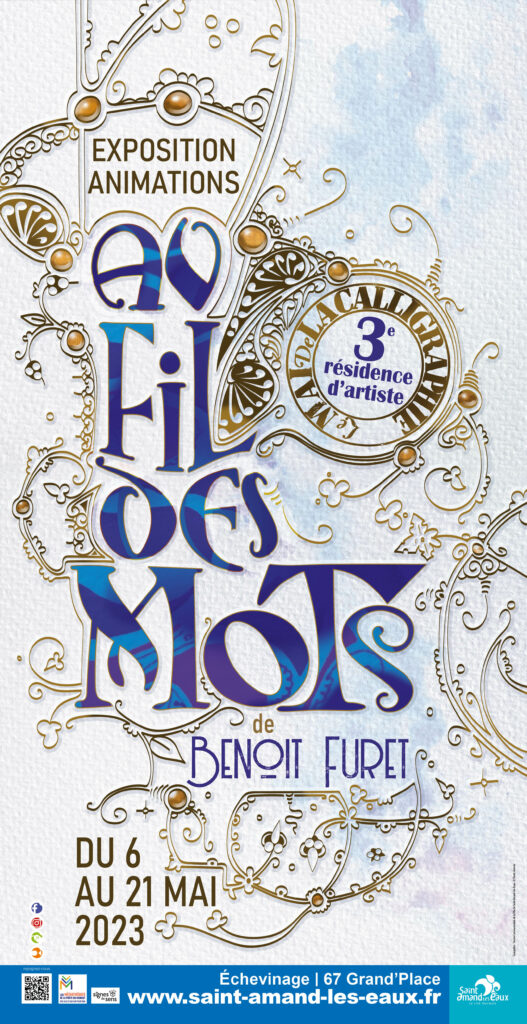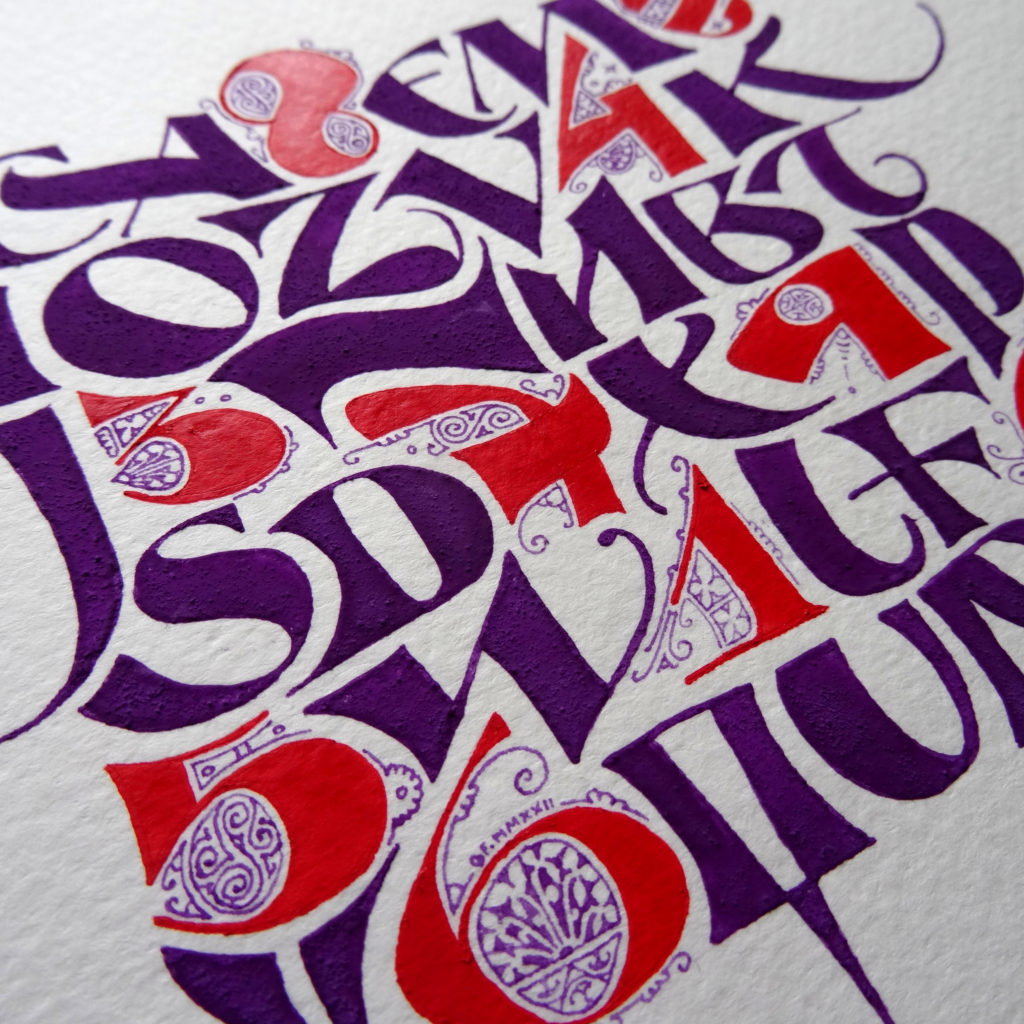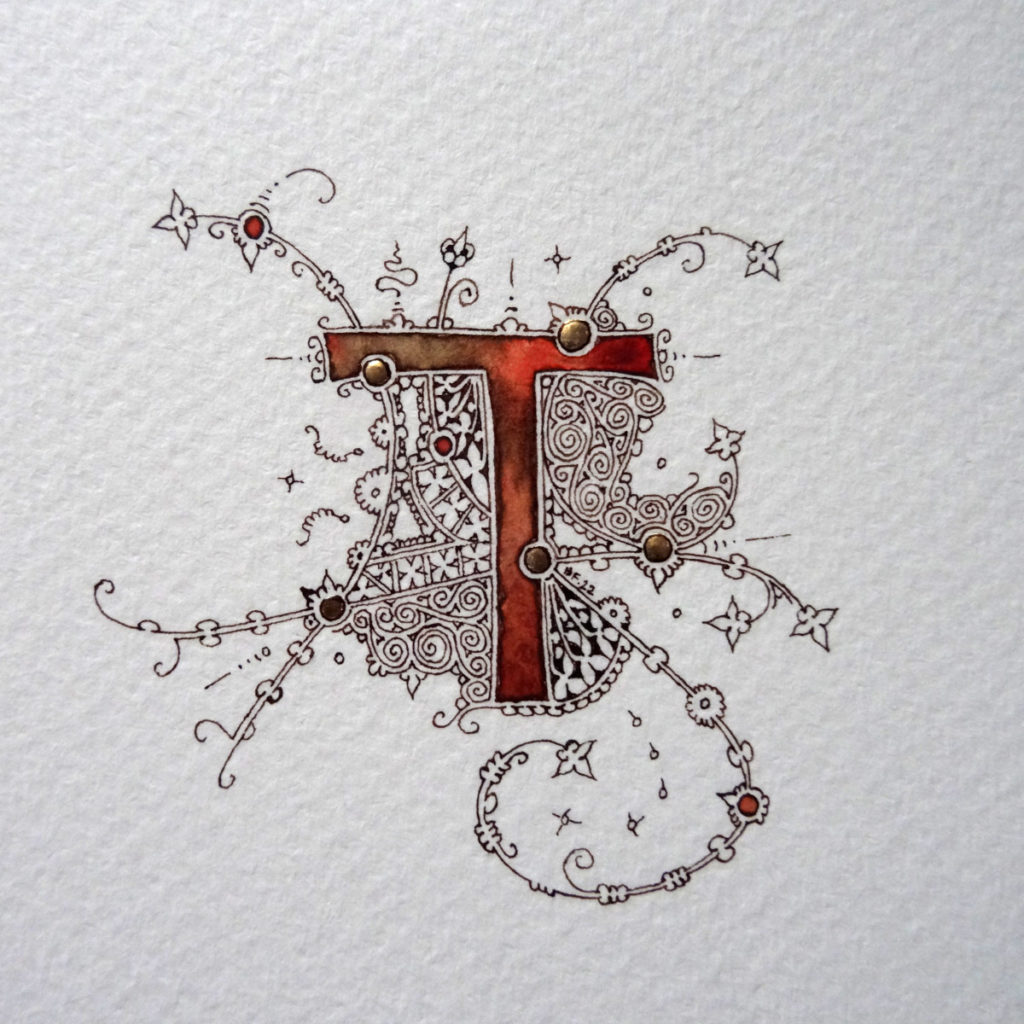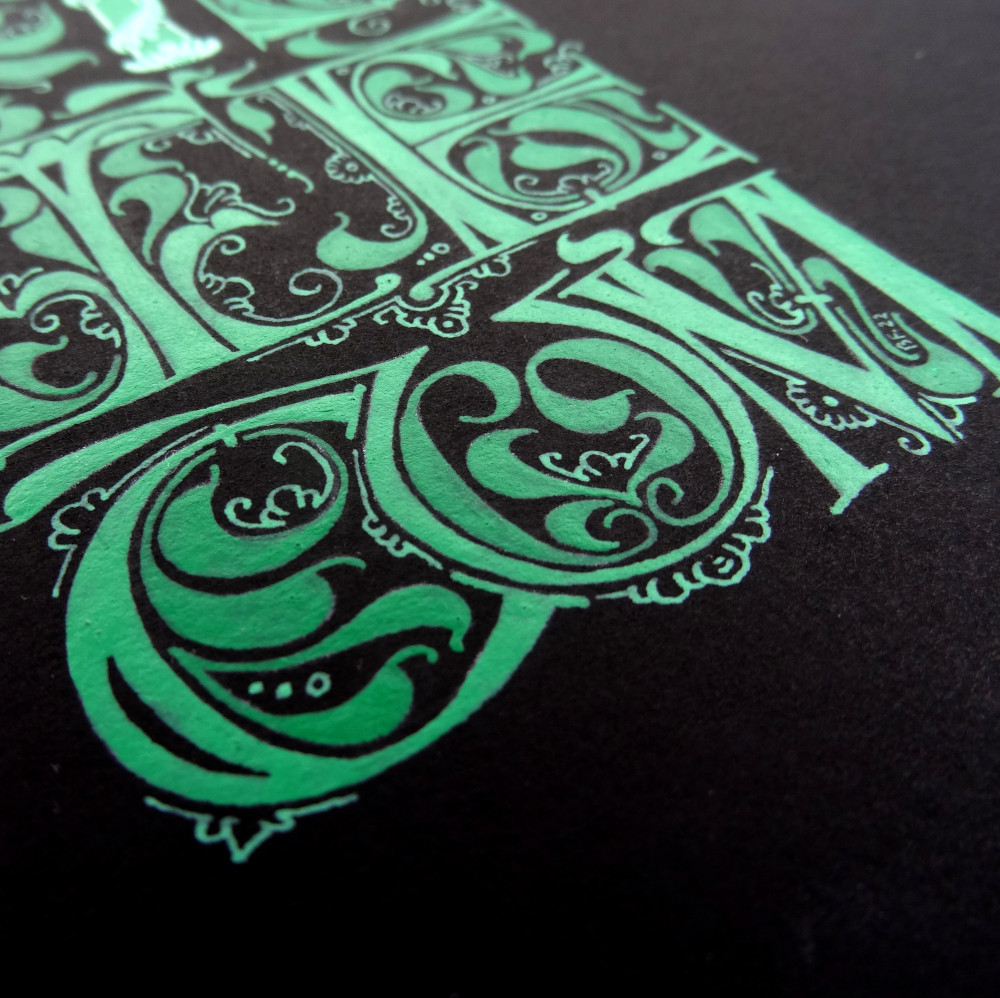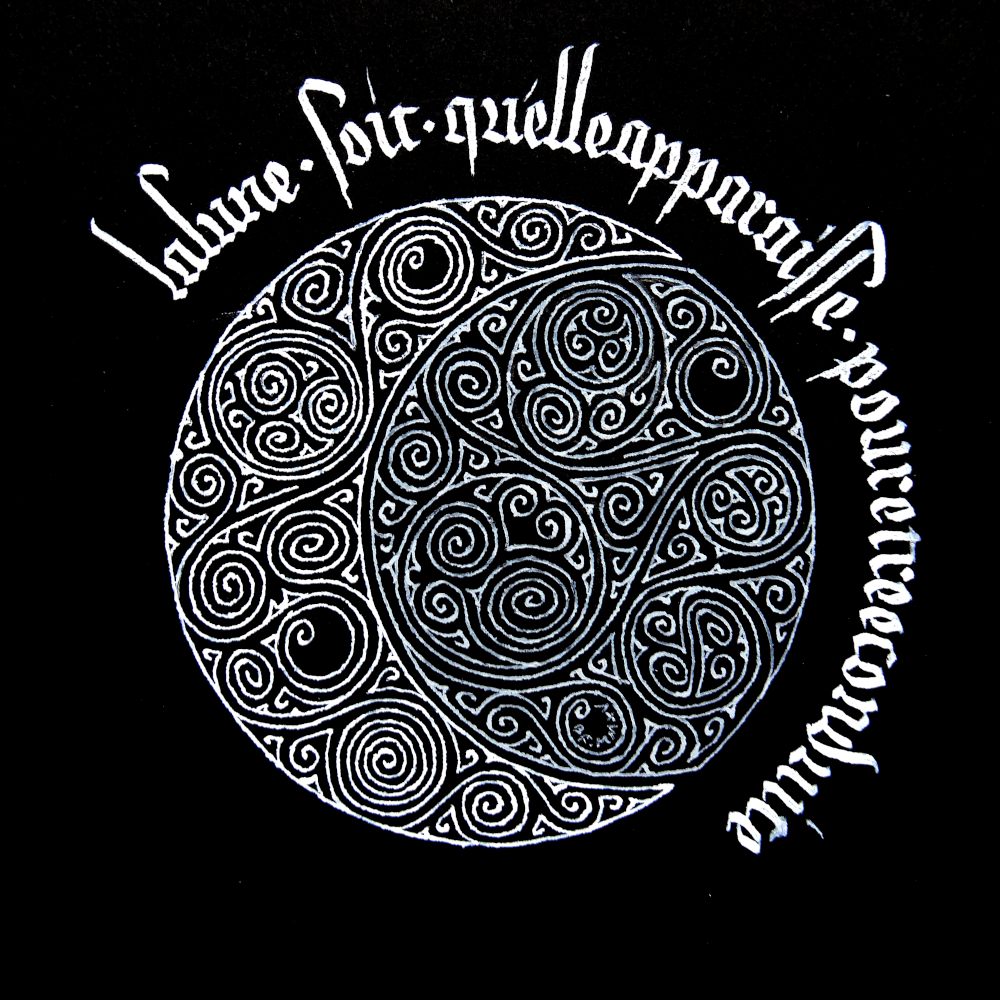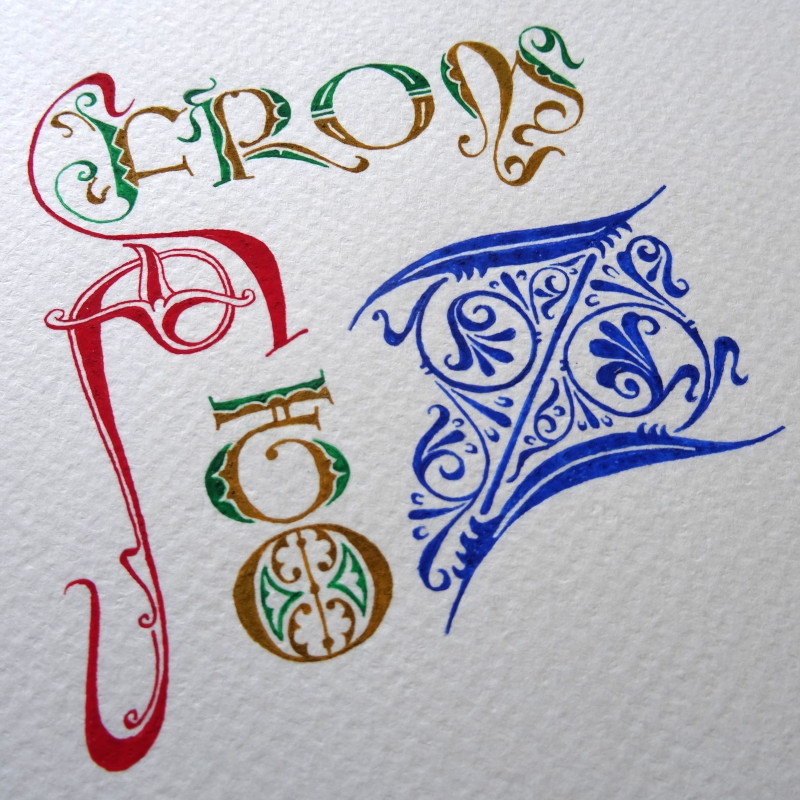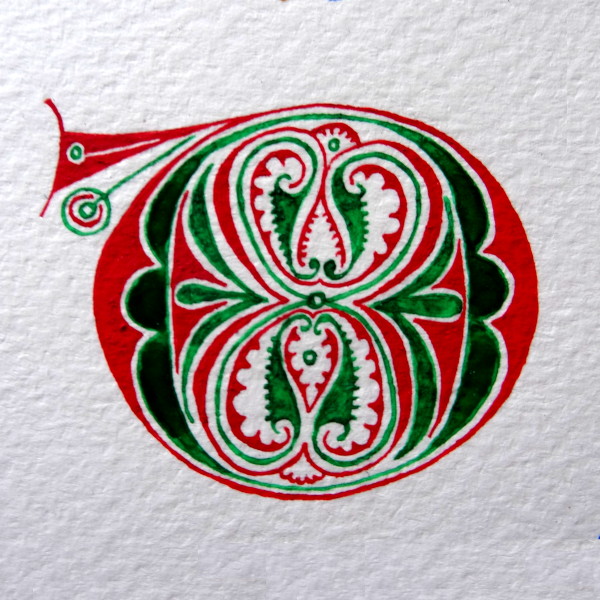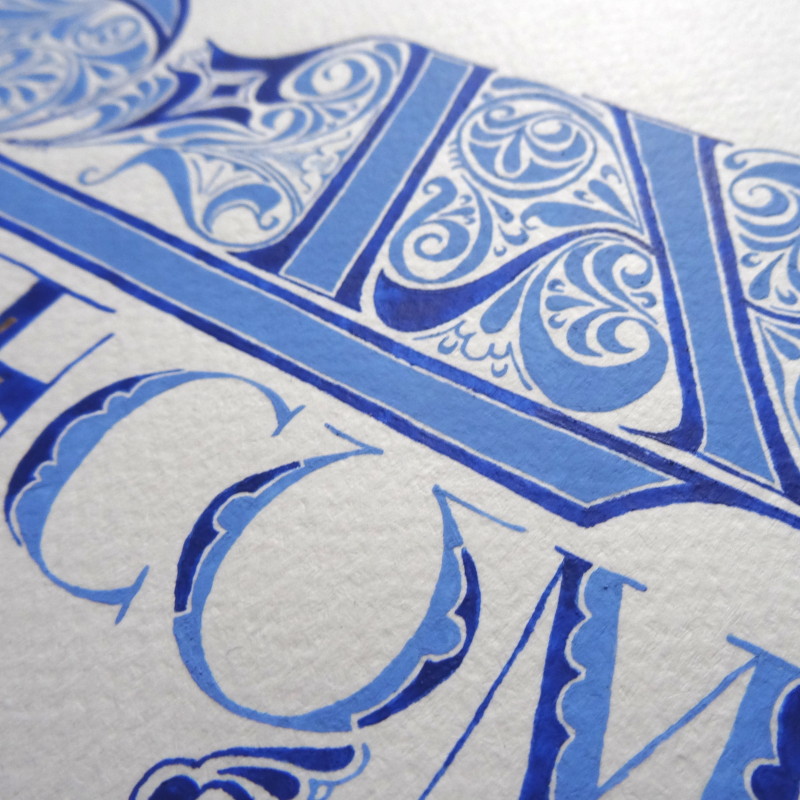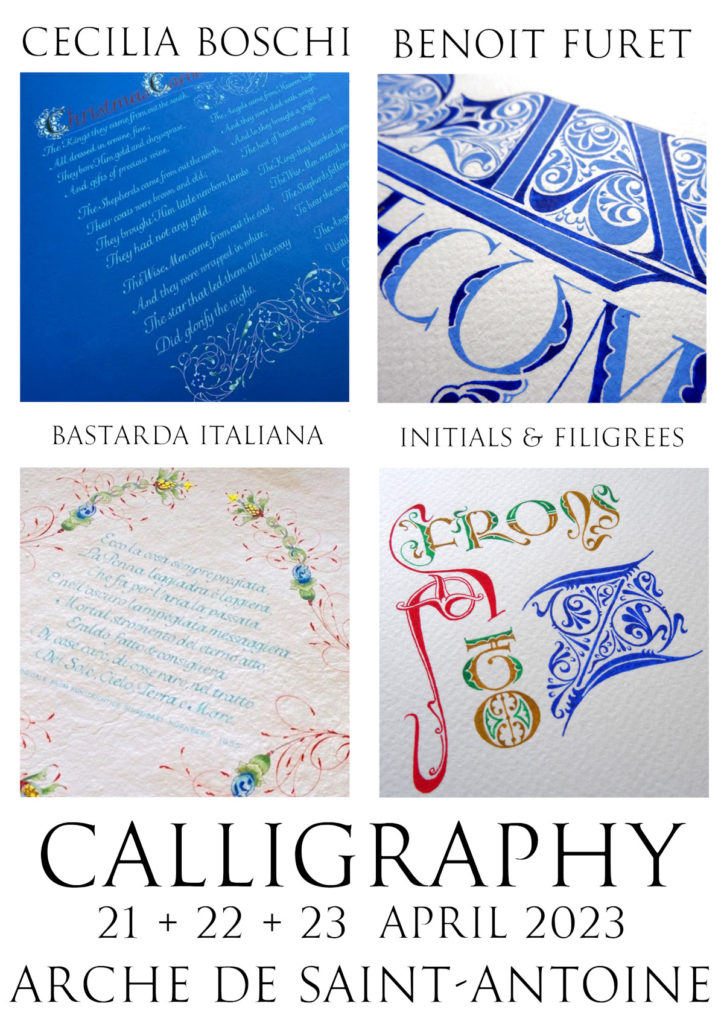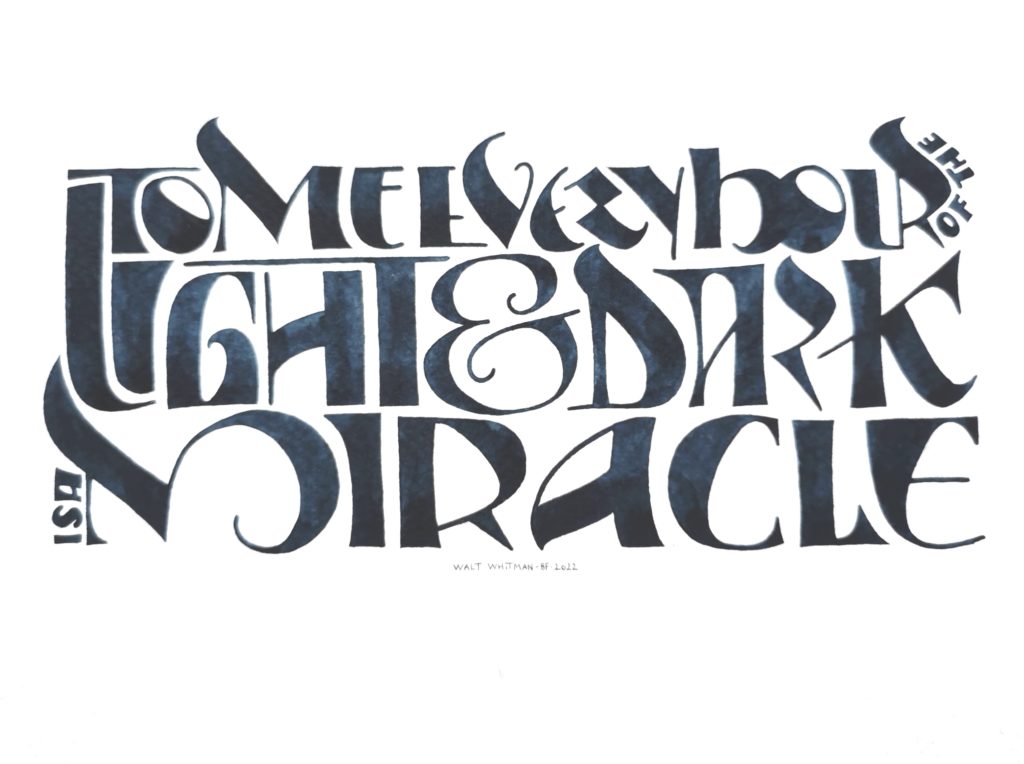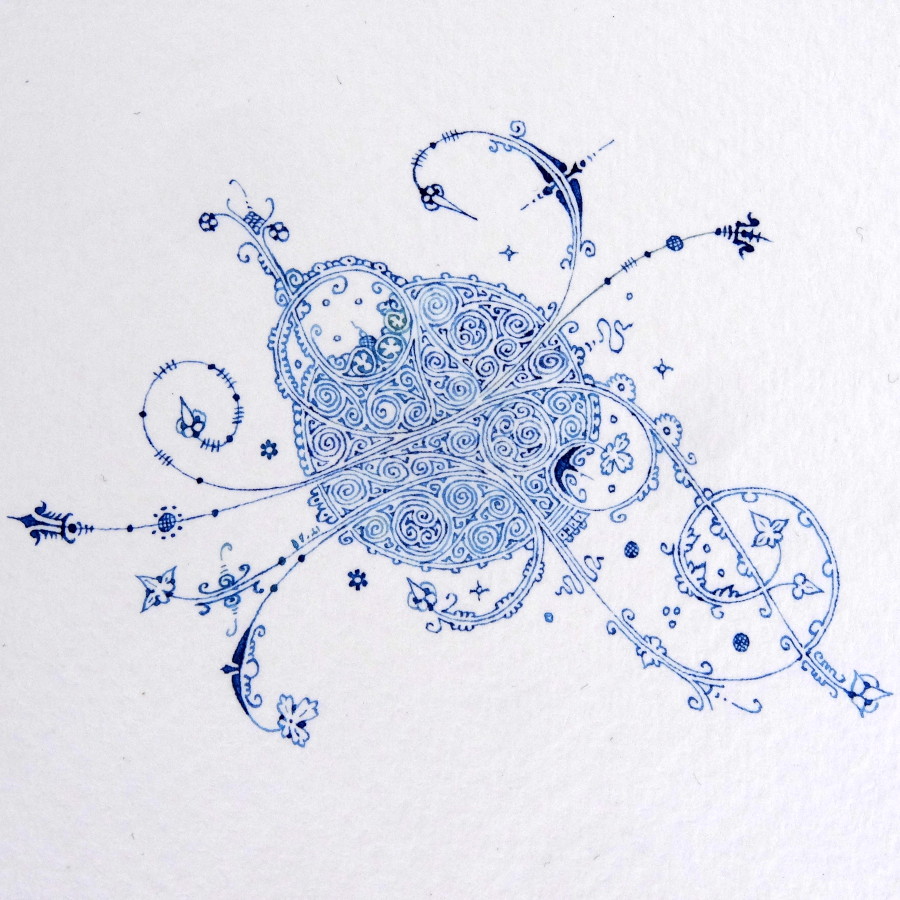Long time since I posted something here (again).
It’s just because I’m very busy, being hosted as an artist in residence in Saint Amand les Eaux during the event le mai de la calligraphie.
I am working on a detailed study of the writings and decorations of the second bible of Charles the Bald, bible which was written in the abbey where I have my workshop and my exhibition.
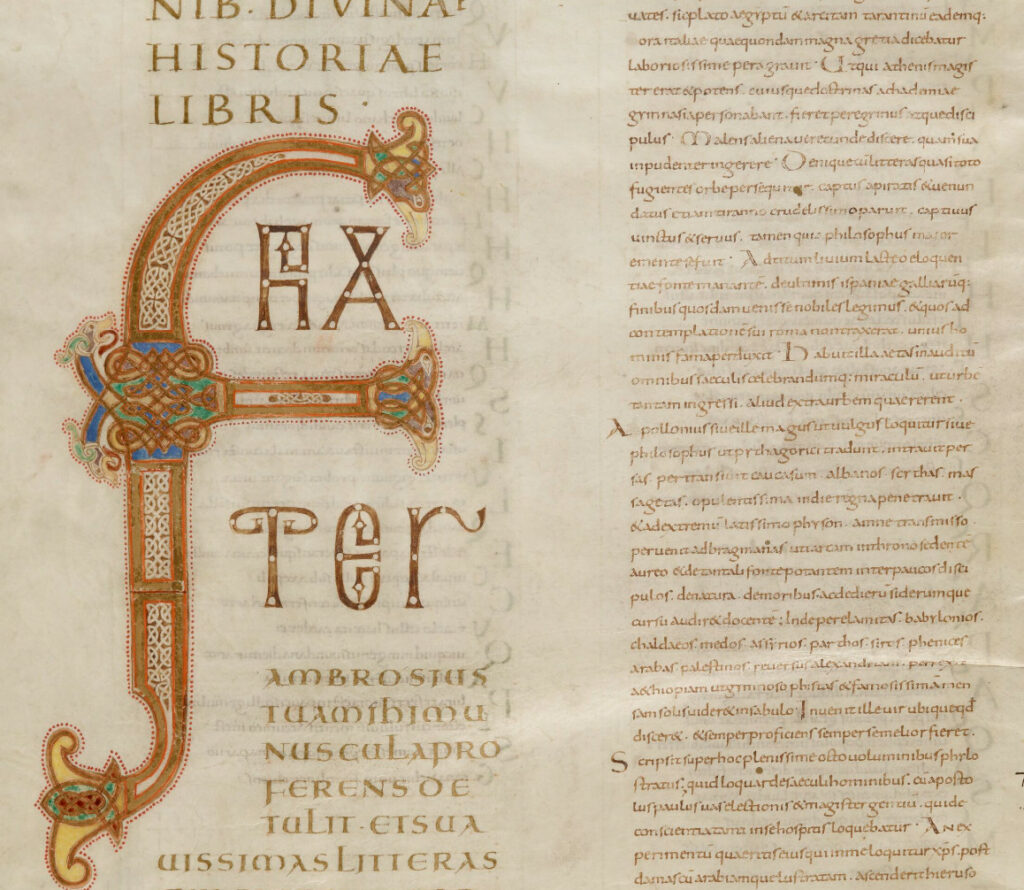
But I also have visitors !!
young students from nearby schools
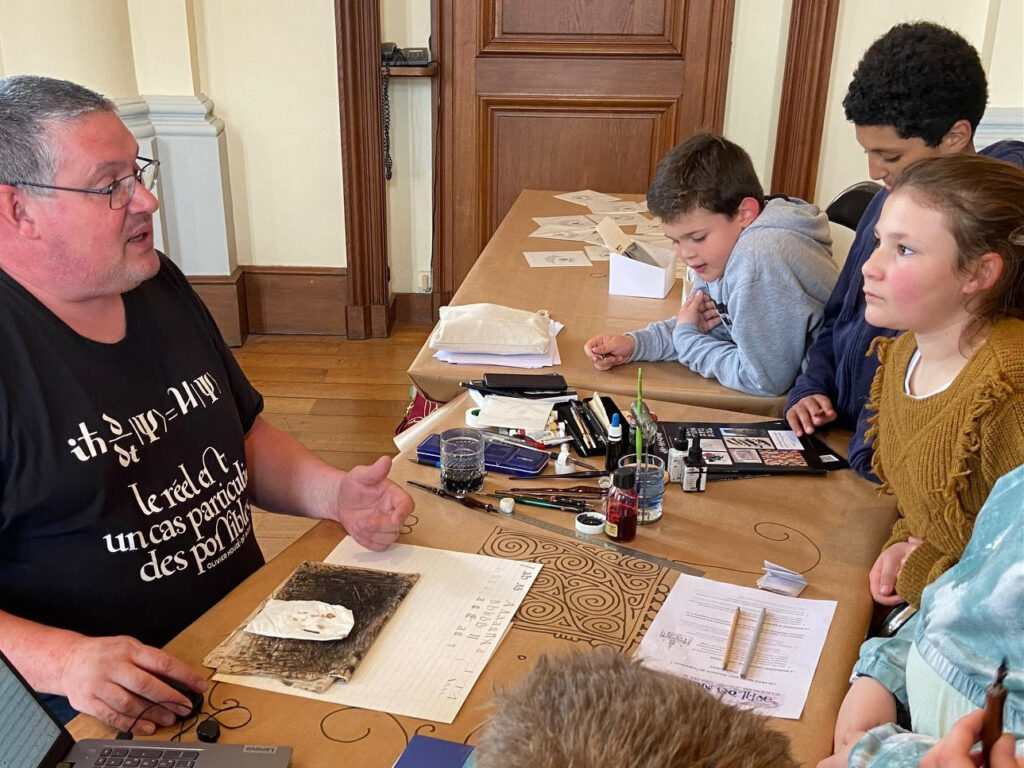
hearing impaired accompanied by a sign language interpreter
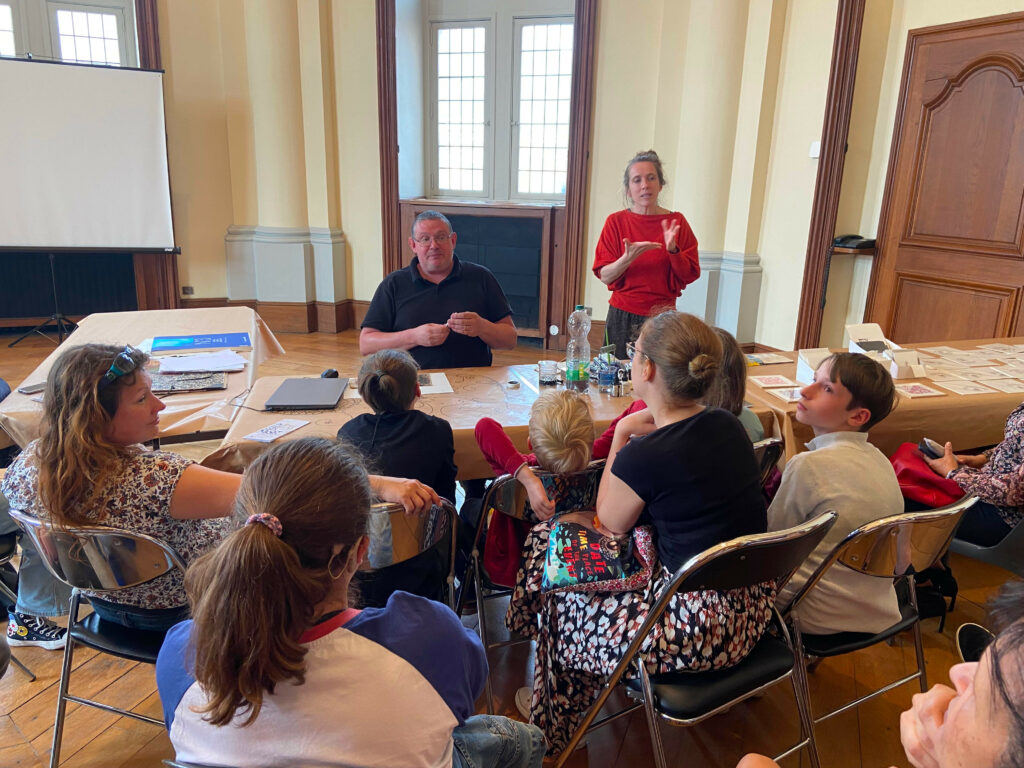
and this weekend, I gave a lecture on the way I work, from the study of medieval manuscripts to contemporary creation
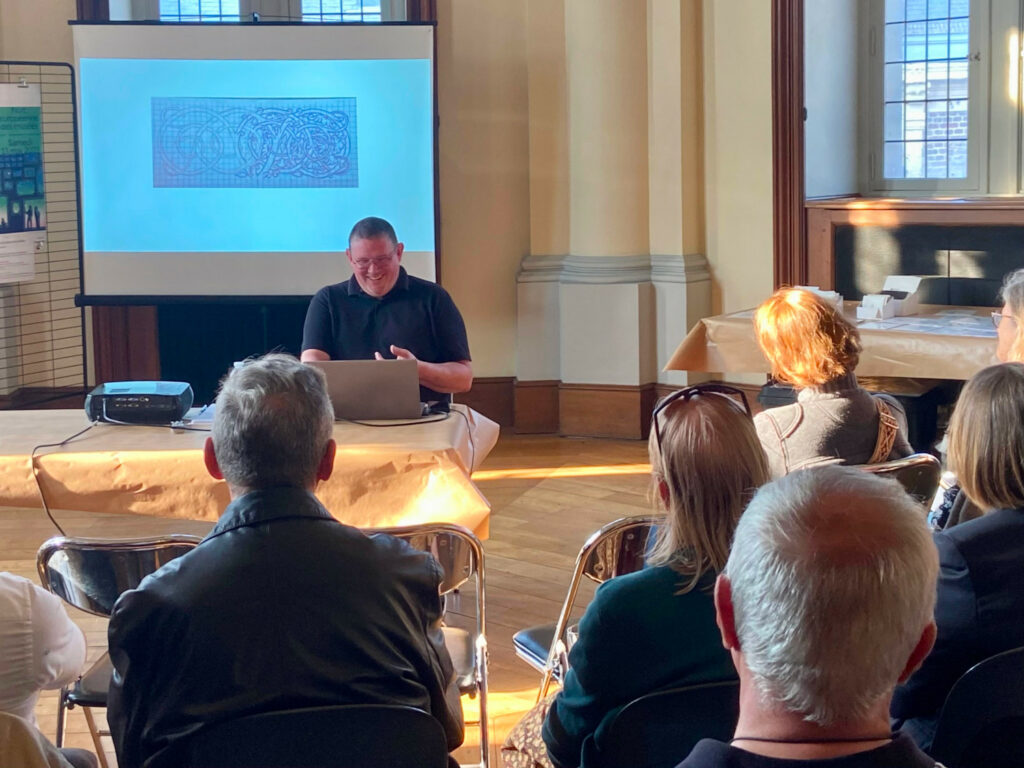
One more week to go and it will end with a workshop on golden Romanesque versals.
